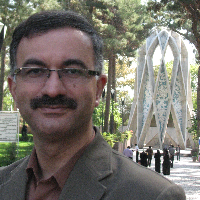An Introduction to the Use of Fuzzy Mathematics in Archeology (Case Study: Virtual Reconstruction of Togrul Tower by Using Fuzzy Reliability)
Author(s):
Article Type:
Research/Original Article (دارای رتبه معتبر)
Abstract:
Nowadays, the use of fuzzy mathematics and fuzzy logic are increasing in various sciences. Archaeology is one of the sciences that is less attended with the methods of fuzzy mathematics and fuzzy logic. Due to the nature of many archaeological data, however, the use of such methods in archaeology can be beneficial. In this research, it has been tried to explain applications of fuzzy logic and fuzzy mathematics in archaeology. This research have six sections. In the beginning, history of using fuzzy logic in archaeology is presented. Then, fuzzy logic is explained, and in section three, necessity of using fuzzy mathematics and fuzzy logic in archaeology are explained at first and then, situations, parts and mechanism of using fuzzy mathematics and fuzzy logic in archaeology are explained. Situations are where the use of fuzzy mathematics and fuzzy logic are useful, including: when the collected data/documentation/information are imprecise, when the relationships between the variables are imprecise and when there is disagreement between archaeologists. Parts of archaeology where fuzzy logic and fuzzy mathematics are applicable include descriptions of data and analysis of data, postdiction, and decision making. The mechanism of using fuzzy mathematics and fuzzy logic in archaeology include fuzzy reliability, designing of fuzzy inference system, and the use of fuzzy statistics. In section four, virtual reconstruction in archaeology is presented. In section five, the fuzzy reliability is explained and its applications in archaeology are described. One of the applications of fuzzy reliability is its use for the virtual reconstruction of destroyed buildings. And finally in section six, to show the process of this method, as a case study, a semi-destructive structure is reconstructed by using fuzzy reliability. The Toghrul Tower, where a small part of tower is collapsed, is selected for such a case study. Of course, this method is applicable to buildings where a lot of them have been destroyed, and to complex buildings. To determine the characteristics, experts commented on technical, geographical, architectural elements of building. Reconstruction is done step by step and in each step, the reliability is calculated. The reliability of the final model is obtained by combining the reliability of the steps. To obtain reliability, two methods have been suggested: use of expert opinion or mathematical/statistical analysis. The Toghrul Tower is reconstructed in comparison with its similar buildings, as well as architectural and technical analysis. Finally, the form of Toghrul Tower was recognized with determined possibilities. This method is beneficial to the archaeologists and conservator for the scientific prediction and postdiction of the structures and objects.
Keywords:
Language:
Persian
Published:
Journal of Research on Archaeometry, Volume:4 Issue: 2, 2018
Pages:
35 to 48
https://www.magiran.com/p1970632
سامانه نویسندگان
مقالات دیگری از این نویسنده (گان)
-
Designing a competency model for the succession of nursing managers, using the Fuzzy Inference System
Marzieh Khorasani-Gerdehkouhi, , Mohammadali Cheraghi
Nursing Practice Today, Winter 2025 -
Membership function based on probability density function
Mohsen Arefi *, S. Mahmoud Taheri
Journal of Fuzzy Systems and Applications,



